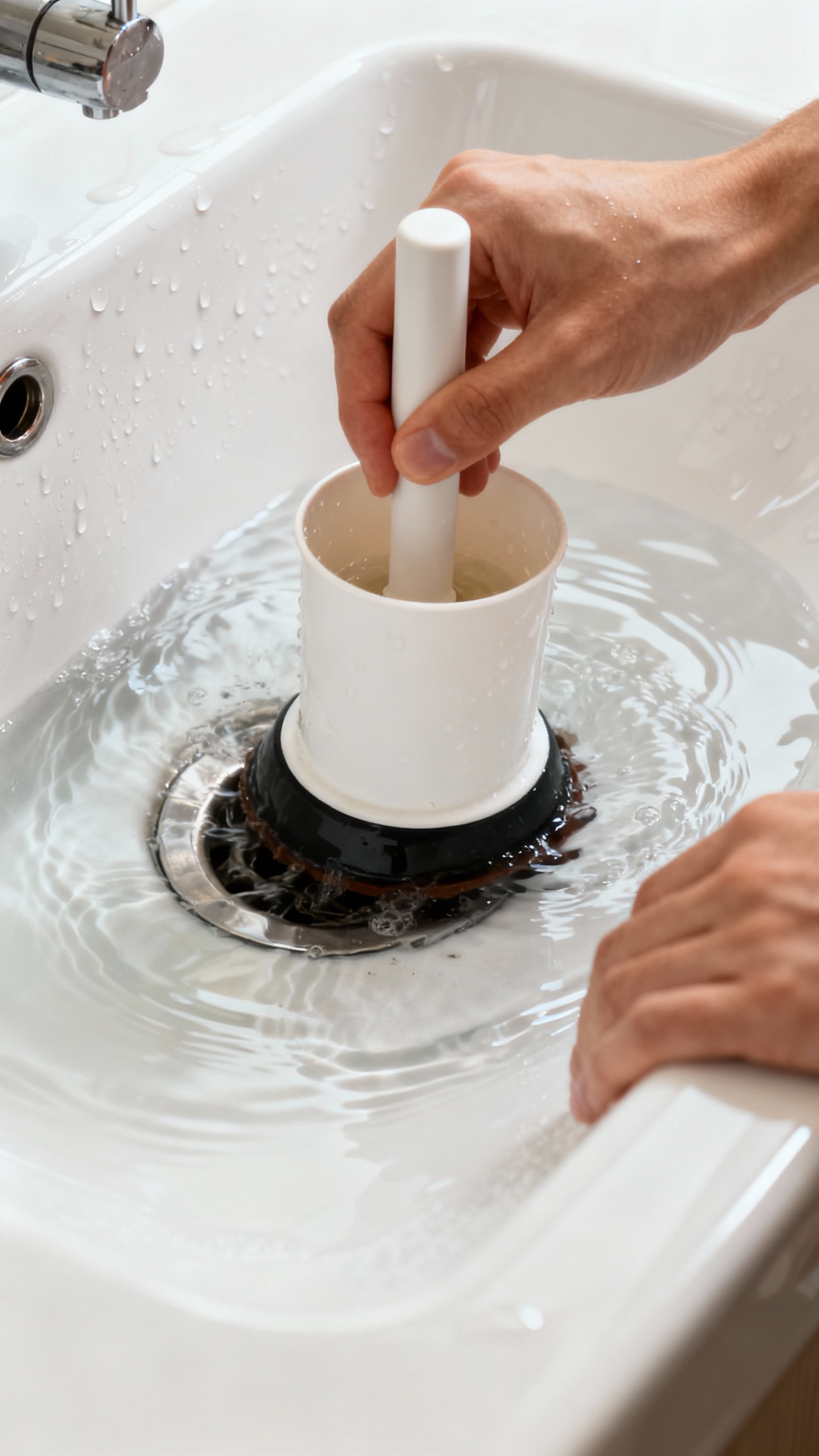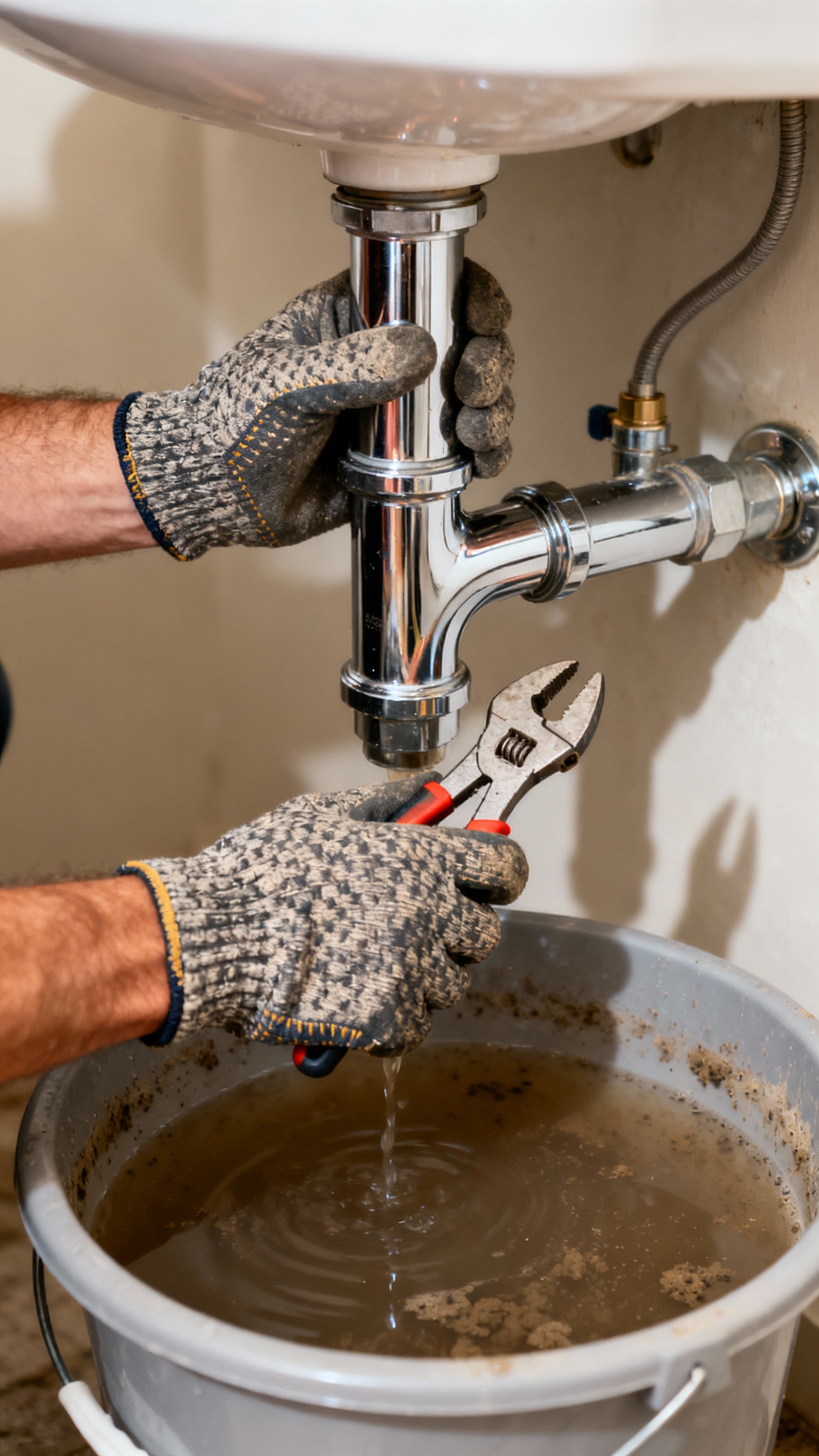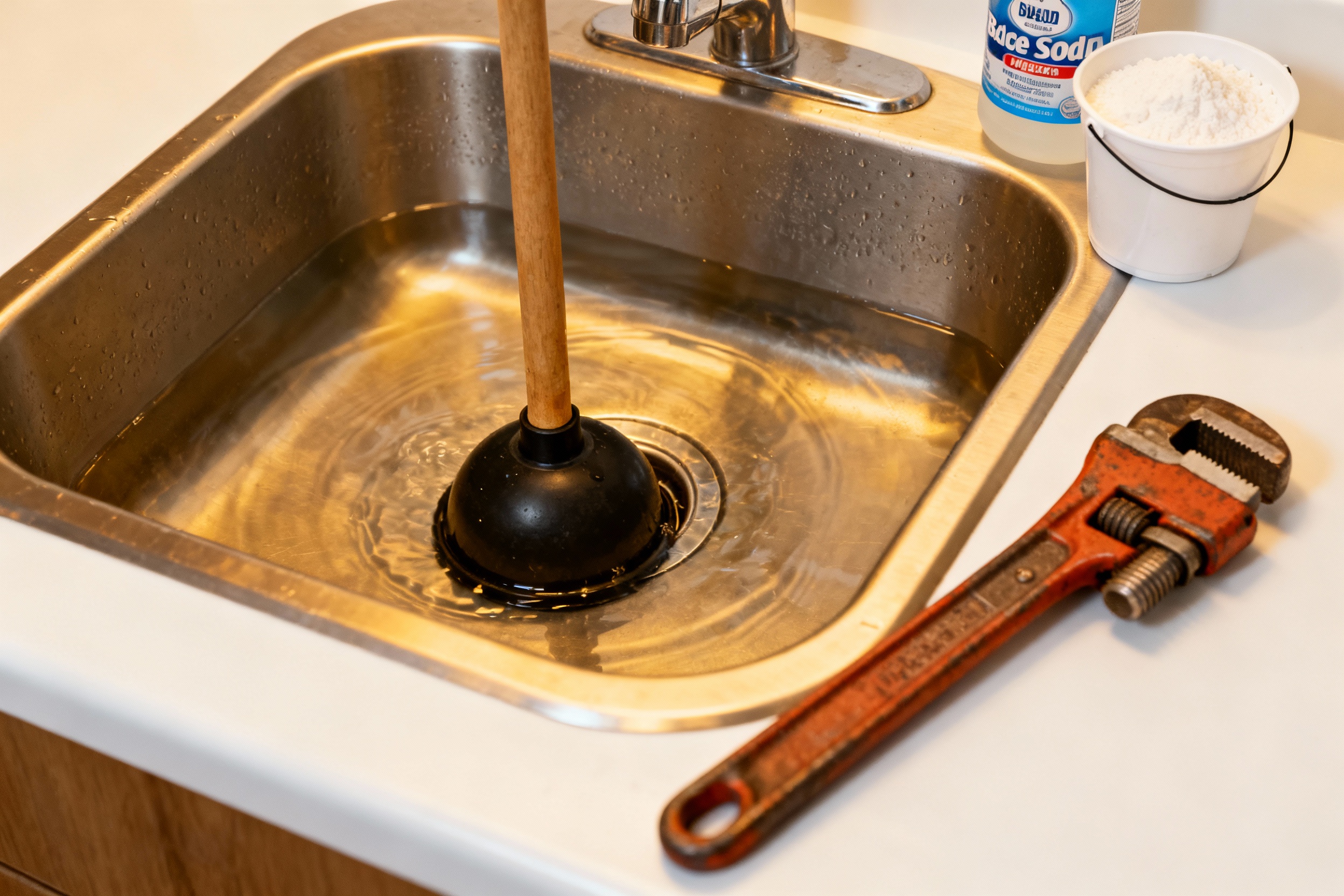Your sink’s not draining, and the gross water is rising like a tiny indoor swamp. You want it fixed fast without calling a plumber who charges more than your last weekend getaway. Good news: you’ve got options.
And no, they don’t all involve harsh chemicals or weird gadgets you’ll use once and lose forever.
First, Figure Out What You’re Dealing With

Before you attack the clog, identify the likely culprit. Kitchen sinks usually clog from grease, soap scum, and food bits. Bathroom sinks?
Hair, toothpaste gunk, and mystery slime. Look for clues:
- Slow drain with gurgling? Partial clog.
- Standing water that won’t budge? Full clog near the trap.
- Water backing up into another drain (like another sink)? The clog sits deeper in the line.
FYI: If multiple drains clog at once or you smell sewage, skip the DIY and call a pro.
That screams main line issue.
The Fastest Fix: Hot Water + Dish Soap
Yes, seriously. Heat breaks down grease, and dish soap cuts through fat like a champ. It’s not magic, but it often works.
- Boil a full kettle or large pot of water.
- Squirt a generous amount of degreasing dish soap into the drain.
- Carefully pour the boiling water down in stages, waiting a few seconds between pours.
- Run hot tap water for a minute to flush.
If the water drains faster, you probably loosened a grease blockage.
If not, onto the next trick.

Grab a Plunger (Yes, the Right Kind Matters)
A plunger can unclog most sinks in minutes if you use it right. Use a cup plunger (flat bottom) for sinks, not the toilet plunger with a flange.
How to Plunge Like You Mean It
- Remove sink stoppers or strainers.
- Block the overflow hole with a wet rag (bathroom sink) or the other drain if it’s a double-basin kitchen sink.
- Add enough water to cover the plunger cup.
- Place the plunger over the drain and press firmly to seal.
- Give 10–15 strong pumps, then quickly pull up to break the seal.
- Repeat 2–3 times. Flush with hot water.
If it gurgles and drains, you win.
If it laughs at you and stays clogged, try the next method.
Baking Soda + Vinegar (The Fizz Trick That Actually Helps)
Is it science fair nostalgic? Yes. Does it work on gunk and soap scum?
Also yes—especially for bathroom sinks.
- Remove standing water so the ingredients reach the clog.
- Pour 1/2 cup baking soda down the drain.
- Follow with 1 cup white vinegar.
- Plug the drain with a rag to keep the fizz focused down the pipe.
- Wait 10–15 minutes, then flush with boiling water.
IMO, this shines for light clogs and maintenance. For a stubborn hairball? You’ll want a more direct attack.
Hair and Gunk?
Go Mechanical
If you’ve got a bathroom sink, there’s a strong chance hair caused the clog. Don’t just throw chemicals at it. Pull it out like a champion.
Use a Zip-It or Plastic Drain Tool
Those cheap plastic barbed strips work wonders.
- Remove the stopper (usually unscrews; some require loosening a pivot rod under the sink).
- Insert the tool, wiggle, then pull out the hair monster.
- Repeat until it runs clean, then flush with hot water.
Will it be gross?
Absolutely. Will it be weirdly satisfying? Also yes.
Clean the P-Trap (Five-Minute Job, Big Results)
The P-trap (curved pipe under the sink) loves to catch debris.
- Place a bucket under the trap.
- Loosen the two slip nuts by hand or with pliers.
- Remove the trap and dump the funk into the bucket.
- Rinse the trap and the pipes you can reach.
- Reinstall, tighten, and run water to check for leaks.
Pro tip: Hand-tighten and then add a tiny quarter-turn with pliers.
Over-tightening cracks plastic fittings. Ask me how I know.
Drain Snake Time (When You Need Reach)
If plunging fails and the P-trap looks clear, the clog might sit further down the line. A hand drain snake (3/8″ or 1/4″, 15–25 feet) can reach it.
How to Use a Snake Without Tangling Yourself
- Remove the P-trap and feed the snake into the wall pipe (the stub-out).
- Crank while pushing forward.
You’ll feel resistance when you hit the clog.
- Keep gentle pressure and rotate to break it up.
- Retract slowly, wiping the cable as you go. Yes, it’s messy. Gloves help.
- Reassemble the trap and test with hot water.
FYI: Don’t force a powered snake in small sink lines unless you know what you’re doing.
You can damage the pipe or yourself. Not the vibe.
What About Chemical Drain Cleaners?
Short answer: use with caution. Long answer: I avoid them except as a last resort for grease clogs, and I never use them on a completely blocked drain.
- Pros: Quick on grease and soap scum, minimal effort.
- Cons: Can damage old pipes, eat finishes, create toxic splashback, and ruin a plumber’s day if you call one afterward.
If you must, use an enzyme-based cleaner for maintenance and keep the heavy-duty stuff on the shelf.
Your pipes (and lungs) will thank you.
Prevent Clogs Like a Pro (So You Don’t Read This Again)
Small habits make a big difference. Future-you will appreciate these.
- Use a drain strainer in kitchen and bathroom sinks. Cheap, effective, zero-brainer.
- Never pour grease down the kitchen sink.
Wipe pans with a paper towel first.
- Run hot water for 20–30 seconds after washing dishes—helps move stuff along.
- Monthly maintenance: Flush with boiling water or use baking soda + vinegar.
- Clean stoppers regularly—hair hides there like it pays rent.
IMO, prevention beats snaking a drain at midnight every time.
FAQs
My sink is completely stopped—what should I try first?
Bail out standing water, then go straight to the plunger. Block the overflow, get a tight seal, and give it several strong pumps. If that fails, clean the P-trap next.
Those two steps solve most total clogs fast.
Can I use baking soda and vinegar in a kitchen sink with a garbage disposal?
Yes. Sprinkle baking soda, add vinegar, cover the drain, and let it fizz. After 10–15 minutes, flush with boiling water, then run cold water and flick the disposal on for a few seconds to clear any remaining debris.
How do I remove the sink stopper to get at the hair?
Look under the sink for the horizontal pivot rod connected to the drainpipe.
Loosen the retaining nut, slide the rod out, and lift the stopper from the sink. Clean, reinsert the rod into the stopper hole, and retighten the nut. Test for smooth movement.
Is a wet/dry vacuum good for unclogging?
It can be awesome.
Set the vacuum to wet, seal the hose over the drain, and block any overflow with a rag. Hold tight and give it 20–30 seconds. It can suck out clogs that plungers can’t touch.
Just sanitize the hose after—because, well, yuck.
When should I call a plumber?
If multiple fixtures back up at once, you smell sewage, or the clog returns immediately after snaking, call a pro. Also call if you have old, delicate pipes and feel unsure about taking apart the trap. No shame—better a small bill than a big leak.
Do enzyme cleaners actually work?
They work best as maintenance.
Enzymes digest organic gunk over time, but they won’t blast through a severe clog fast. Use them weekly or monthly to keep pipes cleaner and avoid future drama.
Wrap-Up: You’ve Got This
Most sink clogs fold with a few simple moves: hot water and soap, a solid plunge, and a quick trap clean or hair pull. Go step by step and escalate only as needed.
Keep a strainer in the drain, treat your pipes nicely, and you won’t need a plumber for every hiccup. And if the drain fights back? Now you know exactly when to DIY and when to tag in help.


